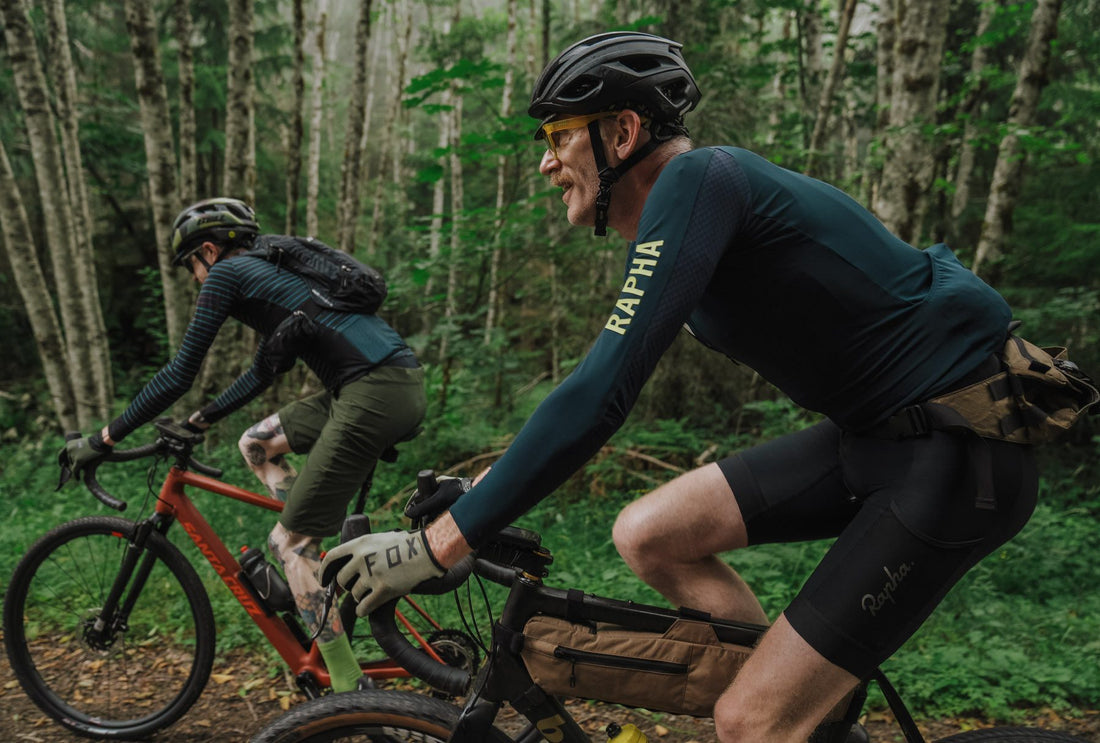Why I Ditched the Camera Strap and Never Looked Back: Advice on bikepacking with a DSLR from Ron Lewis of OMTM - Swift Industries
Share

Photo credit above: Truong Nguyen
We asked our friend Ron Lewis of Our Mother the Mountain to give us the lowdown on he packs his DSLR camera for deep backcountry rides. Here’s the report!
Admit it. Riding with a camera is a pain. A balance of (sometimes) competing priorities. The bigger the camera, the bigger the hassle. Do you favor size, durability, ease of use, image quality or simply say good enough and use your phone? A DSLR is great until you have to ride 100 miles with it. I struggled with this for years and invariably left the camera at home in favor of my iPhone. It was good enough.
All of the existing solutions felt compromised in some way. External straps are fine so long as things are glassy smooth. In the rough stuff they move, slide, bounce around and (in my experience) tend to be constrictive on hard efforts. Kind of a dealbreaker for adventure riding. So I tried bar-mounted camera bags. A few of them. The problem was that I tend to get rowdy. When doing so, weighted, singular items (like cameras) invariably knock against head tubes, stems and bars. Not ideal. What about saddle bags? I tried plenty of saddlebags. They’re great. Just not for cameras. This approach requires a full stop. Then you have to get off the bike. And then get the camera out. By then you probably missed whatever shot you had in mind. Another dealbreaker.
I like to travel light. For me, light usually means a hip pack and that’s about it. They’re nimble, super easy to access and generally check all the right boxes. Certainly a compelling possibility for a camera setup. Only problem is my hip pack is where everything ELSE goes. Food, tools, gloves, pump, extra layers. All of it. As a creature of ingrained habit, I like my stuff where I like my stuff. And that’s in my hip pack.
Almost by accident I came across a Swift Hold Fast Half Framebag. Maybe this was an opportunity to try a different approach. Offloading my requisite stuff would theoretically open up my hip pack as dedicated camera space. Easy, right? I have long associated framebags with loaded multi-day adventures, seemingly at odds with the idea of traveling light, but the first thing I noticed is how light it actually was. Less than 200g. A very good sign. The second thing I noticed was that the bag (in the largest 4L size) fit my bike’s triangle like a glove. I mean perfectly. I’m at the tall end of the scale, size 60, so a snug, dialed fit is a huge plus. The other bonus is that the bag’s svelte design leaves plenty of room for two full-size water bottles. So far, so great. That means it stays on for daily rides, casual rides, weekend rides. All the rides. It’s just easy. Nothing is compromised. But since this is less about the actual framebag and more about what the framebag enables, what this allows me to do is bring my camera on every single ride.
I use a smallish Canon DSLR w/ a slim 24mm fixed ‘pancake’ lens out of sheer practicality. It’s simple, straightforward and good for big backcountry landscapes. It’s too big for a jersey pocket and up to now has been too clunky to ride with. Enter the Swift Anchor hip pack. Its size and proportion accommodate my camera perfectly. It’s got the ideal amount of unstructured internal space to cradle my camera sideways for easy access. It comes out and tucks back in instantaneously. But for me, the true revelation of this setup is that it completely disappears when I’m on the bike. In the rough stuff. On trails. Through all the bump-and-jostle of the backcountry. Nothing bounces. Nothing shakes. There is no sense that I’m carrying something delicate or cumbersome, which is very freeing over long days in the saddle. I can simply ride as if nothing is there, which is rare with full frame cameras.
This simple shifting of gear-space has allowed me to completely re-engage with photography on rides, which has been fantastic. The camera is always accessible in the moment, so there’s a level of spontaneity that hadn’t previously existed. I am able to better document my rides, routes and experiences in richer, more nuanced detail. It is a simple solution to a longstanding problem. That the end result is somewhat unexpected makes this newfound capability that much sweeter!








